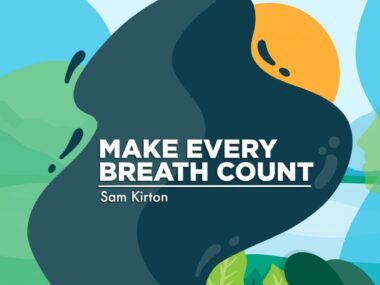When we share our experiences with IPF, it’s not a competition
It's important to remember that every patient's journey is unique
Written by |

We’re not all the same. When I share details about my journey with idiopathic pulmonary fibrosis (IPF), I don’t want to give the impression that I’m setting a standard. My goal in writing this column is to share my experiences, which may or may not be similar to others.
When Steven Nathan, MD, diagnosed me with IPF in January 2017, it was the culmination of a process that began during my annual physical in October 2016.
When I saw Louise Reynolds, my primary care physician, that fall, my nonproductive cough had become an issue in both my professional and personal life. A chest X-ray was performed on the same day as my physical. That led to a CT scan, and those results — along with my nonproductive cough, clubbed fingers, and other symptoms — resulted in my diagnosis.
For me, the process took about four months, but for others in the IPF community, it can take much longer.
Once diagnosed, my future took a different turn than I’d imagined. I soon began taking Esbriet (pirfenidone), one of the two approved anti-fibrotic drugs available to IPF patients in the U.S. Others may have taken Ofev (nintedanib). My care team explained the side effects of both medications, and I elected to take Esbriet.
I worked for another eight months before I could no longer perform essential job functions, resulting in my departure from the workforce on disability. My employee benefits package offered disability income that I was qualified to receive, though I understand not everyone has that option. My focus, my priority, was my health.
In late 2019 and early 2020, I underwent a battery of tests and procedures to determine if I was a good candidate for a lung transplant. I was approved, but deferred. A candidate must be sick enough to require the transplant, but healthy enough to endure the rigor of the surgery. I made it another year before I needed to be listed in March 2021. Not everyone will qualify for a lung transplant or elect to pursue one.
I received a bilateral lung transplant in July 2021 and stayed in the hospital for 10 days until my care team felt I was well enough to function at home. Others who’ve had a lung transplant may have been in the hospital for weeks or even months. The number of days we spend in the hospital is not a competition. Each of us has different needs that dictate the length of our stay.
In the three and a half years since my transplant, I’ve had two hospital stays for treatment. I also required the placement of a stent in my bronchial stem and have had 127 medication changes.
Each of our journeys is unique, and we’re not competing to see whose experience has been the hardest or the easiest. In my view, it’s far more important to connect over similar experiences, despite the individual differences.
Sharing my unique journey allows me to make every breath count.
When your experience is different, I encourage you to share it in the comments or at the PF News Forums.
Note: Pulmonary Fibrosis News is strictly a news and information website about the disease. It does not provide medical advice, diagnosis, or treatment. This content is not intended to be a substitute for professional medical advice, diagnosis, or treatment. Always seek the advice of your physician or other qualified health provider with any questions you may have regarding a medical condition. Never disregard professional medical advice or delay in seeking it because of something you have read on this website. The opinions expressed in this column are not those of Pulmonary Fibrosis News or its parent company, Bionews, and are intended to spark discussion about issues pertaining to pulmonary fibrosis.








Alan Gould
I fully understand. I can't get a transplant as this is south africa. I stopped all medication, Esbriet and ofev. I am weakening but for 2 years quality of life. God bless all ipf sufferers. Alan gould
ezstreet
Samuel, Thank you for writing your story. I'm older, not eligible for transplant, but am enriched by hearing of yours and other's stories.
Yılmaz Erolgac
I am dıognosed IPF 8 years ago and head of the Pulmanary department gave me two—three years to lıve.
Durıng that period I changed four doctors ın San Dıego.All of them just lısen my complaıns and dıd not do anythıng
The last visit my doctor said” It seems to me your İPF is progressıng” recomended to keep usıng OXY Machıne
İ traveled to my home country iTurkiye and Pulmonary Prof.stated medication and geve me breathıng exersize with these exersize myOXY level goes up to 97 and most of all gave me hope to lıve.
I would lıke to share two more experience very brıefly
I had terrıble leg crams an burnıng feet for two years.Doctors ın San Dıego saıd there is no cure for ıt.A turkısh physıcal therapist
Stoped my paıns ın one hour.He new where the nerves causıng the paın
Agaın two eye specıalıst ruled out of my left eye’s vision lost.A Turkısh Prof operated and I gaın %80 of my blınd eye
get a second or thırd opınıon
Zo
Sam,
Thank you for all your postings, very helpful to me and many others. I actually live fairly close to you. Harrisonburg, central Shenadoah Valley, home of JMU Dukes!! I also have had a visit with Dr. Nathan , 3 years ago now. Very impressed with him. I have had PF, in a very slow progression. It's a very long story, starting in 2017. In the beginning as hypersensitivity pneumonitis, then just IDL...so many lung function test and CT scans. and my decline has finally caught up with me.
It is not a contest or competition. It's not cookie cutter.
I have fought oxygen, I.have declined the two meds, Ofev and Esper. ...I have stayed very active, not so much now. So many different journeys with SOME similarities.
I now drop very low very quickly with any fast movement ( I used to be quick), anyway I am on 6 liters all day , 4 at night... if i drop too low 60s, I will take it up to 10 to come up in about 4 min. To 89.
So my question to all is, how do you handle side effects of Ofev. About to start my first pill tonight.
I see where you take the other Esper (whatever)
Just want to hear as many tips on taking this drug Ofev.
Starting with you because I did not know where or how to put out this post to all.
Once again, I wish you the very best and Thank you so much for all you do !!
You are a good man.
John Gould
Separate taking the pills at least 6 hours apart, mine I take at breakfast and at dinner. Take with food, 1/2 way through your meal. Don't take with other meds, both together can cause the runs. If the runs continue daily like mine did, after 6 months of this I lowered my dose to 1 instead of 2 pills a day, runs stopped. in the last 6 months I lost 30 lbs, from 168 to 138 from the PF scarring making my lower lungs like leather so they couldn't let my stomach expand as I ate to let me eat normally - only 4 tbl spoons of food filled me up now. So I eat more often. I take the Costco/Kirkland daily multivitamin to give me what I might miss in my diet.
2 Ofev pills was the full daily adult dose even for big 250 lb men, so at 138 2 pills was too much and I lowered myself to 1 pill a day - it was this or stop taking them. The runs stopped.
Keep stress down it will cause the runs with the pills. Watch the foods you eat, keep them bland.
John Gould
Letting your blood O2 get below 90 can trigger the runs when on Ofev, keep it over 90.